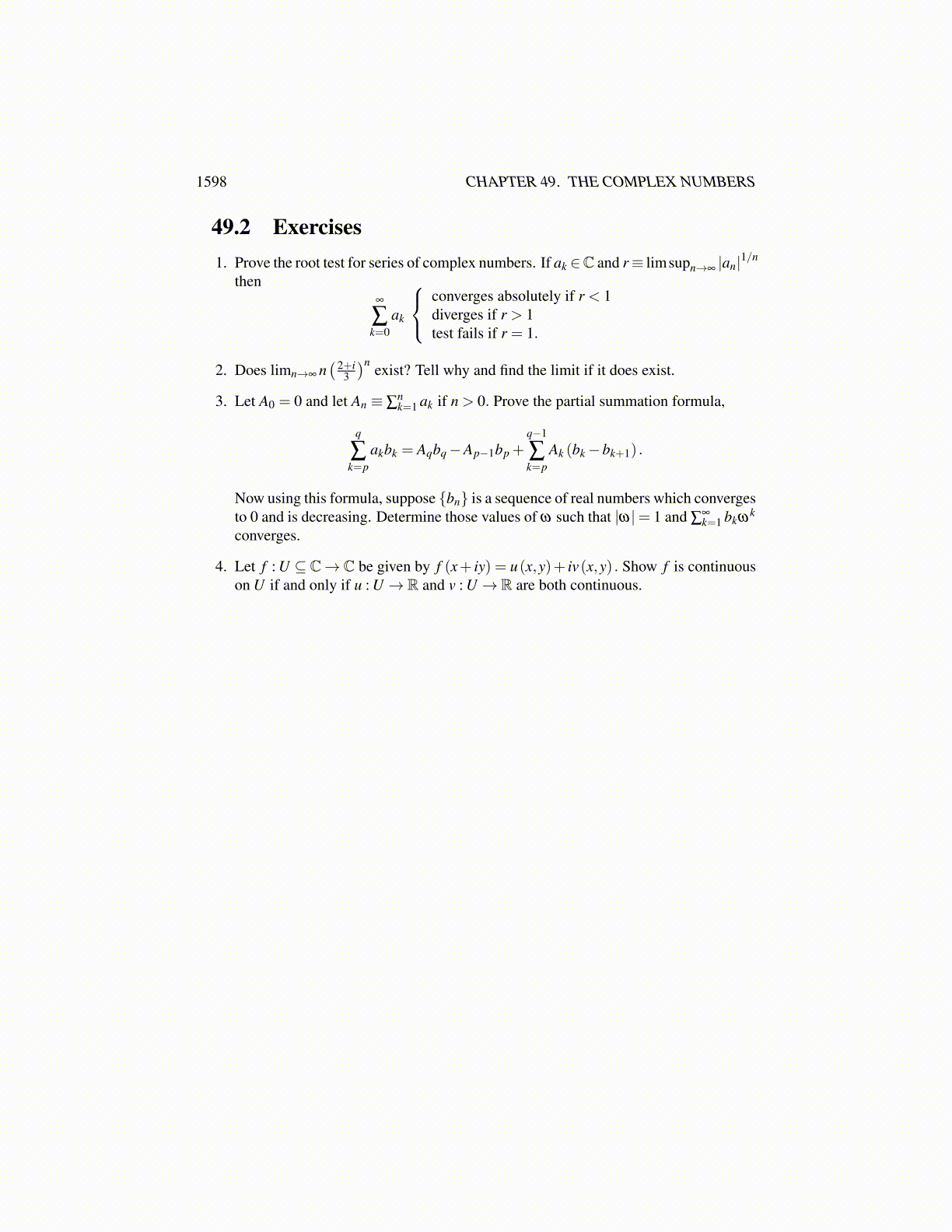
1598 CHAPTER 49. THE COMPLEX NUMBERS
Just as in the case of sums of real numbers, an infinite sum converges if and only if thesequence of partial sums is a Cauchy sequence.
From now on, when f is a function of a complex variable, it will be assumed that f hasvalues in X , a complex Banach space. Usually in complex analysis courses, f has valuesin C but there are many important theorems which don’t require this so I will leave it fairlygeneral for a while. Later the functions will have values in C. If you are only interested inthis case, think C whenever you see X .
Definition 49.0.4 A sequence of functions of a complex variable, { fn} converges uniformlyto a function, g for z ∈ S if for every ε > 0 there exists Nε such that if n > Nε , then
|| fn (z)−g(z)||< ε
for all z∈ S. The infinite sum ∑∞k=1 fn converges uniformly on S if the partial sums converge
uniformly on S. Here ||·|| refers to the norm in X , the Banach space in which f has itsvalues.
The following proposition is also a routine application of the above definition. Neitherthe definition nor this proposition say anything new.
Proposition 49.0.5 A sequence of functions, { fn} defined on a set S, converges uniformlyto some function, g if and only if for all ε > 0 there exists Nε such that whenever m,n > Nε ,
|| fn− fm||∞ < ε.
Here || f ||∞≡ sup{|| f (z)|| : z ∈ S} .
Just as in the case of functions of a real variable, one of the important theorems is theWeierstrass M test. Again, there is nothing new here. It is just a review of earlier material.
Theorem 49.0.6 Let { fn} be a sequence of complex valued functions defined on S ⊆ C.Suppose there exists Mn such that || fn||∞ < Mn and ∑Mn converges. Then ∑ fn convergesuniformly on S.
Proof: Let z ∈ S. Then letting m < n∣∣∣∣∣∣∣∣∣∣ n
∑k=1
fk (z)−m
∑k=1
fk (z)
∣∣∣∣∣∣∣∣∣∣≤ n
∑k=m+1
|| fk (z)|| ≤∞
∑k=m+1
Mk < ε
whenever m is large enough. Therefore, the sequence of partial sums is uniformly Cauchyon S and therefore, converges uniformly to ∑
∞k=1 fk (z) on S.
49.1 The Extended Complex PlaneThe set of complex numbers has already been considered along with the topology of Cwhich is nothing but the topology of R2. Thus, for zn = xn+ iyn, zn→ z≡ x+ iy if and onlyif xn→ x and yn→ y. The norm in C is given by
|x+ iy| ≡ ((x+ iy)(x− iy))1/2 =(x2 + y2)1/2